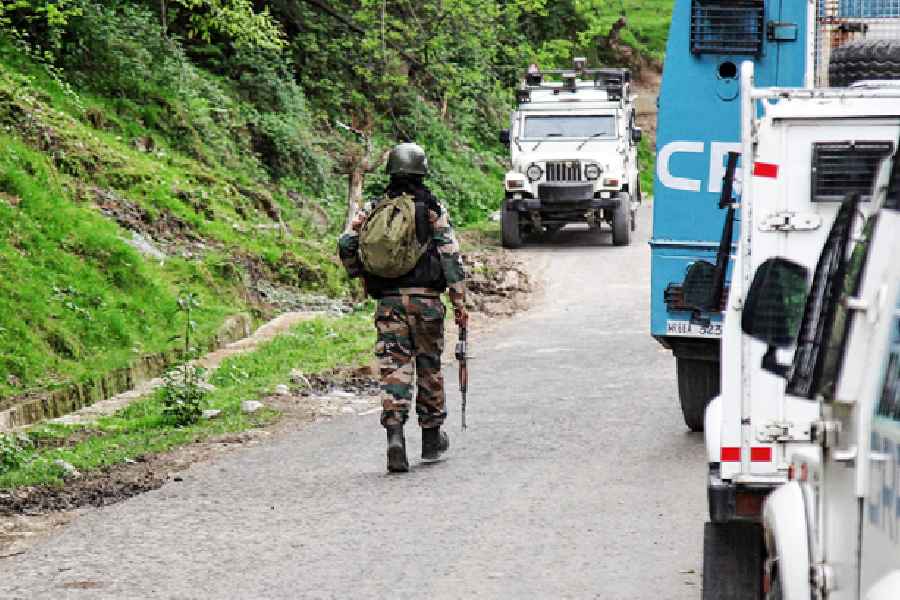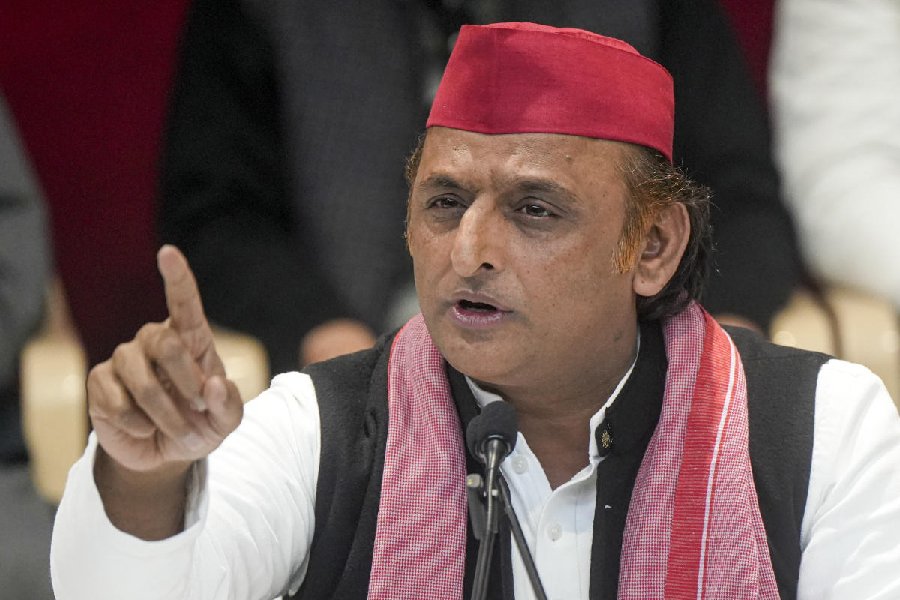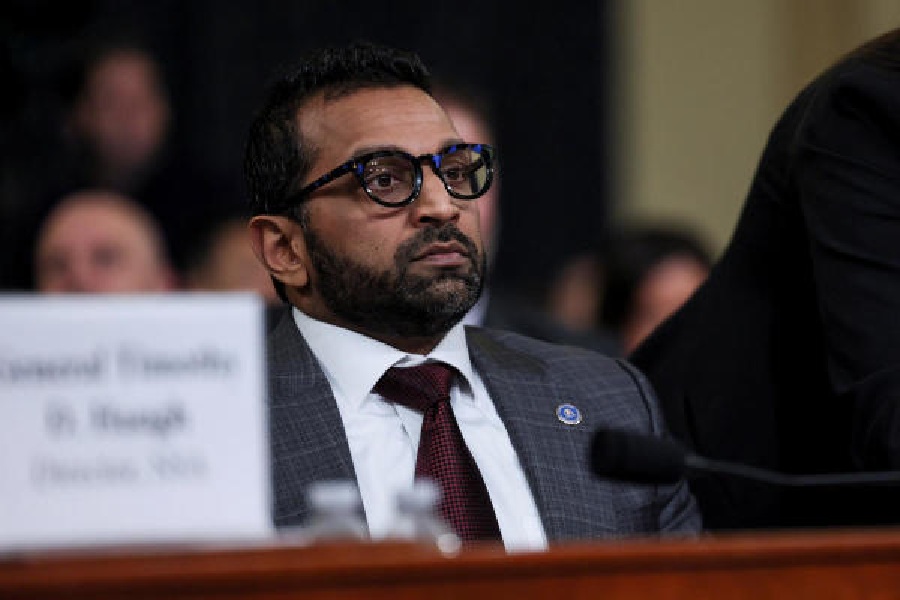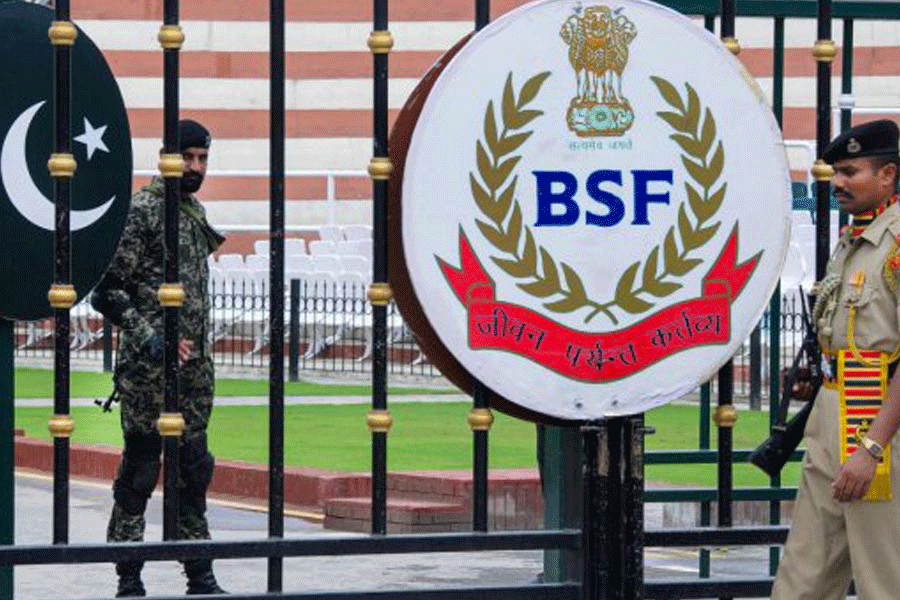|
|
| The entertainer |
ramguha@vsnl.com
My most poignant memory of this World Cup was of little Aravinda de Silva failing to make his ground in time to beat a direct hit by Andy Bichel. That throw ended his innings, and his career as well. It also effectively won Australia the match, since so long as de Silva was around the result could not be taken for granted. True, five wickets had already fallen, but the two exquisite back-foot drives he had played off Glenn McGrath showed that he was batting at close to his best. The timing was there, and so was the will. But in the end, de Silva was undone by an ill-judged call by his partner and by the slowness of his own ancient legs.
My mind went back to another World Cup semi-final, played at the Eden Gardens in March 1996. Then too Aravinda de Silva had come in to bat with his side in trouble. Jayasuriya and Kaluwitharana, as ever going for broke, had both been caught at third man off flying edges. Sri Lanka were 1 for 2 in the first over. De Silva walked to the wicket, his face shining with determination. Before he played on to Anil Kumble in the fifteenth over, he had hit fourteen fours in an innings of 66, made off a mere 47 balls. Among his shots were an elegant cover drive off Srinath, a delicate late cut off Kumble, and two lusty lofted pulls off Venkatesh Prasad. In an hour of inspired batsmanship he changed the course of the match. His half-century set Sri Lanka on the path to 250, a score India never looked like reaching.
De Silva was to do even better in the final. Australia, batting first, started brilliantly, and looked set for a total in excess of 300. But they were slowed by the bowling and fielding of de Silva — he took three wickets with his off-breaks, as well as two catches. He was instrumental in restricting Australia to 241 for 7 in 50 overs. The score was substantial enough, but it was made grossly inadequate by the Sri Lankans. They got there with nearly four overs to spare, their innings built around a beautifully paced and assured hundred by de Silva.
(Among the ironies of that World Cup final was the fact that in the early Nineties, Aravinda de Silva had planned to retire from cricket and migrate to Australia. Hundreds of fans besieged his house, leaving only when he had agreed to change his mind.)
As it happens, my most enduring memory of the 1996 World Cup was of another run out. It took place in Bangalore, and the victim was that other greatly gifted shot-maker, Javed Miandad. Then too Miandad stood between the opposition and victory. The top order had all gone, but so long as the old warrior was around, and middling the ball, India could not take the result for granted. It took another direct hit, by Ajay Jadeja as I recall, to end Miandad’s innings and his career with it.
Four years prior to that Bangalore match, Miandad had played a part in winning a World Cup. In the 1992 final Pakistan lost early wickets to the England seamers. Miandad and his captain, Imran Khan, came together in a retrieving partnership. Both scored careful fifties, setting the stage for the blazing fireworks of Inzamam-ul Haq and Wasim Akram. When England batted, Miandad went off the field. He stayed there until the game’s end, when he walked on to envelop his captain in the Pakistani flag.
Memories of that 1992 victory encouraged Miandad to postpone his retirement from international cricket until he had played in the next edition of the tournament. Doubtless he was further encouraged by the fact that in 1996 the World Cup was to be played in the subcontinent. Sri Lanka won that year, but did rather poorly in England in 1999. Two years later the hero of their World Cup triumph was dropped from the team. In April 2002, I was in Colombo on a private visit, and was told by a cricket-mad friend that de Silva was determined to make a comeback. The week I was there he played for his club, Nondescripts, against Mutthiah Muralitharan’s Tamil Union, and hit the off-spinner for five sixes. Knocks like these won him back a place in the one-day side. And so he made his way with his mates to South Africa, and helped them to the semi-finals.
In the 1996 World Cup final, de Silva’s first wicket was that of Mark Taylor, caught sweeping. Early in this match too, he dismissed a left-hander (Adam Gilchrist) sweeping. The signs were not unpropitious — and when the mighty Aussies finished with a modest 212, it seemed the Sri Lankans had a decent chance. But Brett Lee made early inroads. Sri Lanka were reeling, before de Silva came in and hit those two crisp boundaries. At this point Glenn McGrath and Ricky Ponting, bowler and captain respectively, must surely have had their mind go back seven years. Would de Silva’s bat take away this match as well? It just might have, had Sangakkara not called him for a crazy run or had Bichel missed the stumps.
And so, de Silva’s last World Cup appearance, like that of Javed Miandad, ended not in triumph but in tragedy. Did they go on too long? When to call it a day is an extraordinarily difficult decision for a sportsman to make. The legendary Indian opening batsman, Vijay Merchant, announced his retirement after scoring a hundred in a test match, as it happens the first of a five-test series. Fans and friends alike were puzzled by his decision, until Merchant told them: “One must retire when the public asks ‘Why?’, rather than ‘Why not?’”
Merchant was very likely inspired by the example of Don Bradman. The Don too went out at the top, announcing his retirement after the 1948 Australian tour of England, when his side was unbeaten through the summer and he himself scored prolifically with the bat. Another Bombay batsman, Sunil Gavaskar, also stopped playing when he had some good cricket still left in him.
But others have not been as lucky, or as wise, in their timing. Take the case of that magnificent all-rounder, Kapil Dev Nikhanj. Kapil was kept going by the chase for the world record for most test wickets. The record was finally achieved, but along the way Kapil was forced to hear nasty remarks about how he was preventing Jawagal Srinath from cementing his place in the Indian side. Speaking of cricketers from overseas, such acknowledged greats as Ian Botham and Garfield Sobers should probably have retired two or three years before they actually did.
The one cricketer who has successfully made a World Cup his last hurrah is Imran Khan. After the 1992 championship he left cricket for social work and, in time, for politics. Even so, to win the World Cup Imran’s team needed a huge slice of luck — from the weather, which washed out an early match the Pakistanis were certain to lose, allowing them to stay in the competition. (They had scored only 74, a target the other side would certainly have reached.) After leading the West Indies to World Cup wins in 1975 and 1979, Clive Lloyd intended to retire after the 1983 tournament — but then unfancied India stopped the hattrick. Arjuna Ranatunga probably feels, in retrospect, that he should have called it quits after 1996 — but he stayed on until the next championship, when his side performed disastrously.
Whether forced or voluntary, the moment of retirement is a most painful experience for the sportsman. As Aravinda de Silva reflectively put it at his farewell press conference, “I have now to figure out what to do with the rest of my life.” One thing he, and we, know — that he can no longer do what he is best at. Nor can Wasim Akram, Allan Donald and Jonty Rhodes, three other cricketers whose careers ended with this World Cup.











